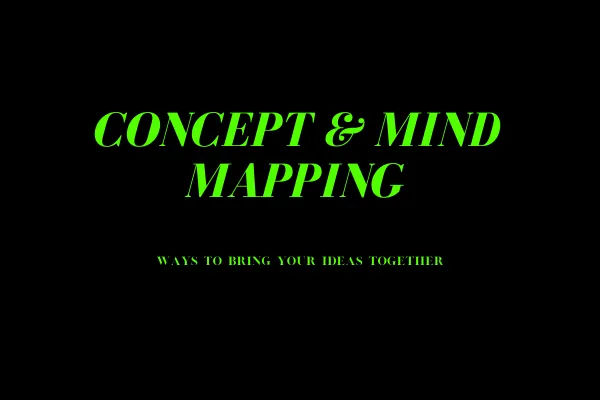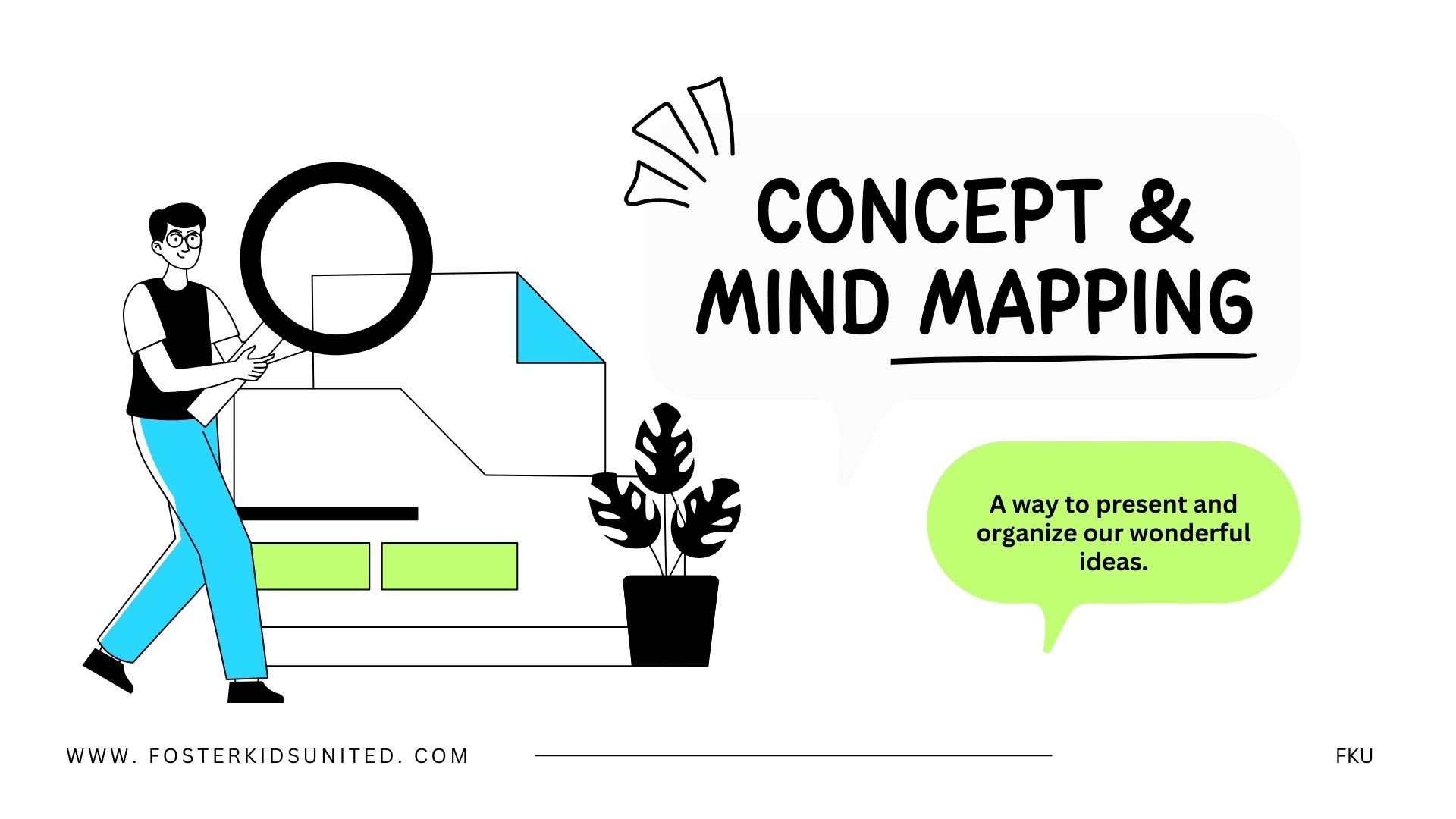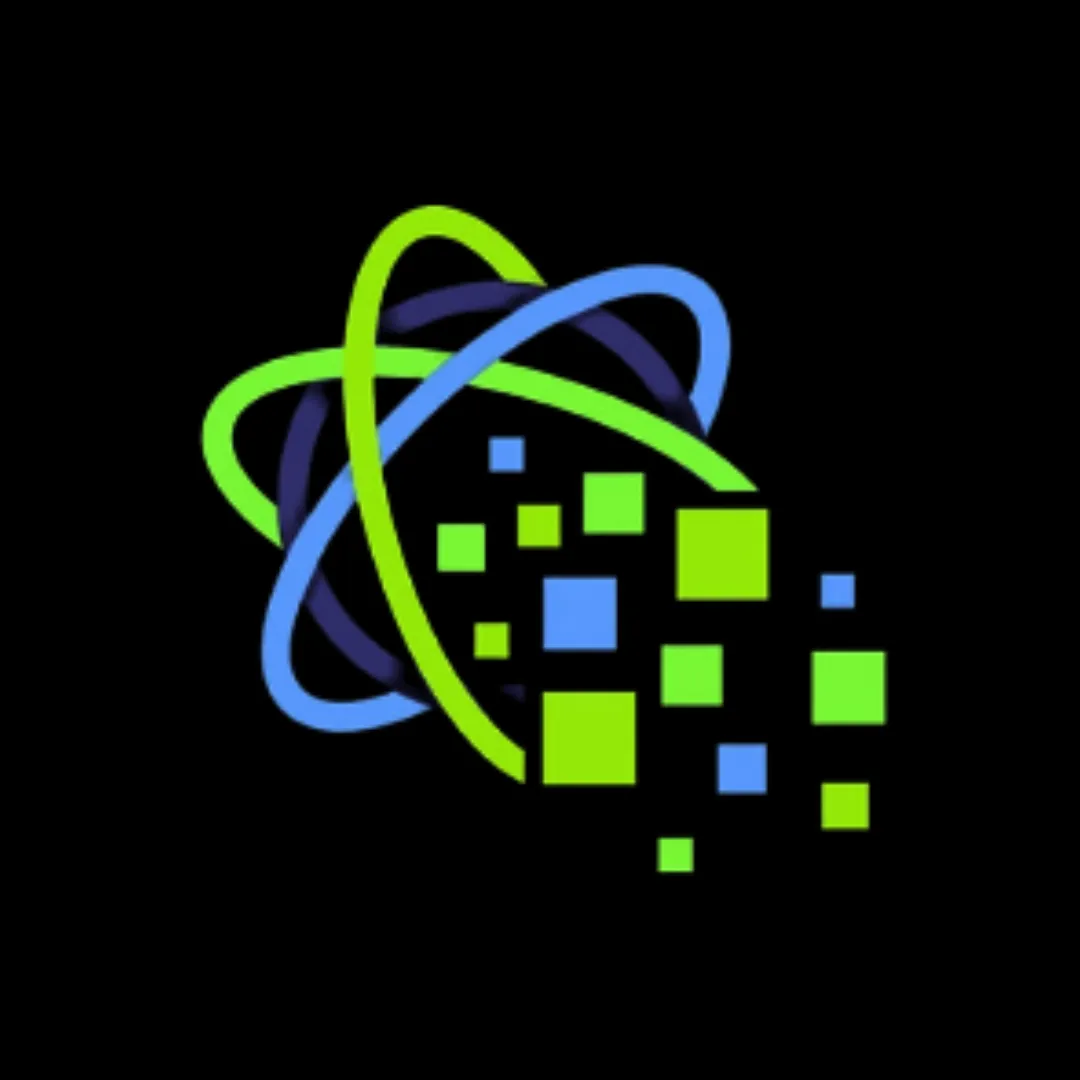
Concept and Mind Mapping
Unlocking Creativity and Productivity: The Power of Concept and Mind Mapping

In a world that demands constant ideation, organization, and effective communication, finding the perfect tools to harness your thoughts and bring them to life is crucial. Enter concept and mind mapping, two powerful techniques that can revolutionize the way you approach creativity, problem-solving, and project management. In this blog post, we delve into the world of concept and mind mapping, exploring their benefits, applications, and techniques, to help you unleash your full potential.
Understanding Concept Mapping: Concept mapping is a visual representation technique that helps you connect ideas, concepts, and relationships in a structured and organized manner. By creating a network of interconnected nodes and links, you can gain a comprehensive overview of a topic, revealing its core elements and their interdependencies. Whether you're brainstorming for a new project, studying complex subjects, or trying to solve intricate problems, concept mapping allows you to explore connections and uncover new insights.
The Power of Mind Mapping: Mind mapping takes a more free-flowing and nonlinear approach to organizing thoughts. It involves creating a central idea or concept at the center of the map and radiating outwards with branches and sub-branches that represent related ideas, concepts, or tasks. By visually capturing your thoughts and associations, mind mapping stimulates creative thinking, enhances memory retention, and enables holistic thinking. It's a versatile tool that can be used for brainstorming, planning, note-taking, and more.
Benefits of Concept and Mind Mapping: a. Enhanced Creativity: Concept and mind mapping encourage divergent thinking and allow you to explore various ideas and connections. By breaking away from linear thinking, you can tap into your creative potential and generate innovative solutions.
b. Improved Learning and Retention: Visual representations help facilitate understanding and memory recall. Concept and mind mapping provide a more engaging and holistic learning experience, enabling you to absorb and retain information more effectively.
c. Enhanced Organization and Clarity: Mapping techniques enable you to structure your thoughts, making complex ideas easier to comprehend and communicate. You can identify key components, prioritize tasks, and establish logical relationships, leading to improved clarity and organization.
d. Efficient Project Management: From planning a product launch to organizing a research paper, concept and mind mapping provide a bird's-eye view of the entire project. By breaking it down into manageable parts, mapping techniques enhance efficiency and ensure all essential aspects are considered.
Practical Tips for Effective Mapping: a. Start with a clear objective or central concept. b. Use colors, icons, and images to enhance visual appeal and aid memory retention. c. Keep branches and sub-branches concise and focused. d. Embrace flexibility and allow the map to evolve as your thoughts develop. e. Utilize digital tools or dedicated mind mapping software for added convenience and collaboration.

Concept and Mind Mapping
Unlocking Creativity and Productivity: The Power of Concept and Mind Mapping

In a world that demands constant ideation, organization, and effective communication, finding the perfect tools to harness your thoughts and bring them to life is crucial. Enter concept and mind mapping, two powerful techniques that can revolutionize the way you approach creativity, problem-solving, and project management. In this blog post, we delve into the world of concept and mind mapping, exploring their benefits, applications, and techniques, to help you unleash your full potential.
Understanding Concept Mapping: Concept mapping is a visual representation technique that helps you connect ideas, concepts, and relationships in a structured and organized manner. By creating a network of interconnected nodes and links, you can gain a comprehensive overview of a topic, revealing its core elements and their interdependencies. Whether you're brainstorming for a new project, studying complex subjects, or trying to solve intricate problems, concept mapping allows you to explore connections and uncover new insights.
The Power of Mind Mapping: Mind mapping takes a more free-flowing and nonlinear approach to organizing thoughts. It involves creating a central idea or concept at the center of the map and radiating outwards with branches and sub-branches that represent related ideas, concepts, or tasks. By visually capturing your thoughts and associations, mind mapping stimulates creative thinking, enhances memory retention, and enables holistic thinking. It's a versatile tool that can be used for brainstorming, planning, note-taking, and more.
Benefits of Concept and Mind Mapping: a. Enhanced Creativity: Concept and mind mapping encourage divergent thinking and allow you to explore various ideas and connections. By breaking away from linear thinking, you can tap into your creative potential and generate innovative solutions.
b. Improved Learning and Retention: Visual representations help facilitate understanding and memory recall. Concept and mind mapping provide a more engaging and holistic learning experience, enabling you to absorb and retain information more effectively.
c. Enhanced Organization and Clarity: Mapping techniques enable you to structure your thoughts, making complex ideas easier to comprehend and communicate. You can identify key components, prioritize tasks, and establish logical relationships, leading to improved clarity and organization.
d. Efficient Project Management: From planning a product launch to organizing a research paper, concept and mind mapping provide a bird's-eye view of the entire project. By breaking it down into manageable parts, mapping techniques enhance efficiency and ensure all essential aspects are considered.
Practical Tips for Effective Mapping: a. Start with a clear objective or central concept. b. Use colors, icons, and images to enhance visual appeal and aid memory retention. c. Keep branches and sub-branches concise and focused. d. Embrace flexibility and allow the map to evolve as your thoughts develop. e. Utilize digital tools or dedicated mind mapping software for added convenience and collaboration.

Concept and Mind Mapping
Unlocking Creativity and Productivity: The Power of Concept and Mind Mapping

In a world that demands constant ideation, organization, and effective communication, finding the perfect tools to harness your thoughts and bring them to life is crucial. Enter concept and mind mapping, two powerful techniques that can revolutionize the way you approach creativity, problem-solving, and project management. In this blog post, we delve into the world of concept and mind mapping, exploring their benefits, applications, and techniques, to help you unleash your full potential.
Understanding Concept Mapping: Concept mapping is a visual representation technique that helps you connect ideas, concepts, and relationships in a structured and organized manner. By creating a network of interconnected nodes and links, you can gain a comprehensive overview of a topic, revealing its core elements and their interdependencies. Whether you're brainstorming for a new project, studying complex subjects, or trying to solve intricate problems, concept mapping allows you to explore connections and uncover new insights.
The Power of Mind Mapping: Mind mapping takes a more free-flowing and nonlinear approach to organizing thoughts. It involves creating a central idea or concept at the center of the map and radiating outwards with branches and sub-branches that represent related ideas, concepts, or tasks. By visually capturing your thoughts and associations, mind mapping stimulates creative thinking, enhances memory retention, and enables holistic thinking. It's a versatile tool that can be used for brainstorming, planning, note-taking, and more.
Benefits of Concept and Mind Mapping: a. Enhanced Creativity: Concept and mind mapping encourage divergent thinking and allow you to explore various ideas and connections. By breaking away from linear thinking, you can tap into your creative potential and generate innovative solutions.
b. Improved Learning and Retention: Visual representations help facilitate understanding and memory recall. Concept and mind mapping provide a more engaging and holistic learning experience, enabling you to absorb and retain information more effectively.
c. Enhanced Organization and Clarity: Mapping techniques enable you to structure your thoughts, making complex ideas easier to comprehend and communicate. You can identify key components, prioritize tasks, and establish logical relationships, leading to improved clarity and organization.
d. Efficient Project Management: From planning a product launch to organizing a research paper, concept and mind mapping provide a bird's-eye view of the entire project. By breaking it down into manageable parts, mapping techniques enhance efficiency and ensure all essential aspects are considered.
Practical Tips for Effective Mapping: a. Start with a clear objective or central concept. b. Use colors, icons, and images to enhance visual appeal and aid memory retention. c. Keep branches and sub-branches concise and focused. d. Embrace flexibility and allow the map to evolve as your thoughts develop. e. Utilize digital tools or dedicated mind mapping software for added convenience and collaboration.
